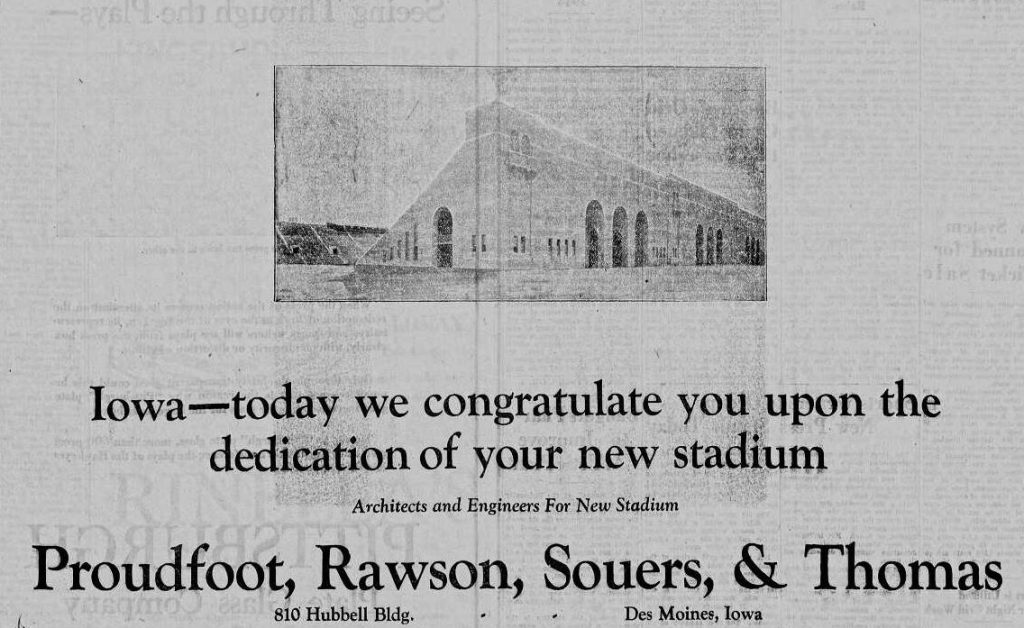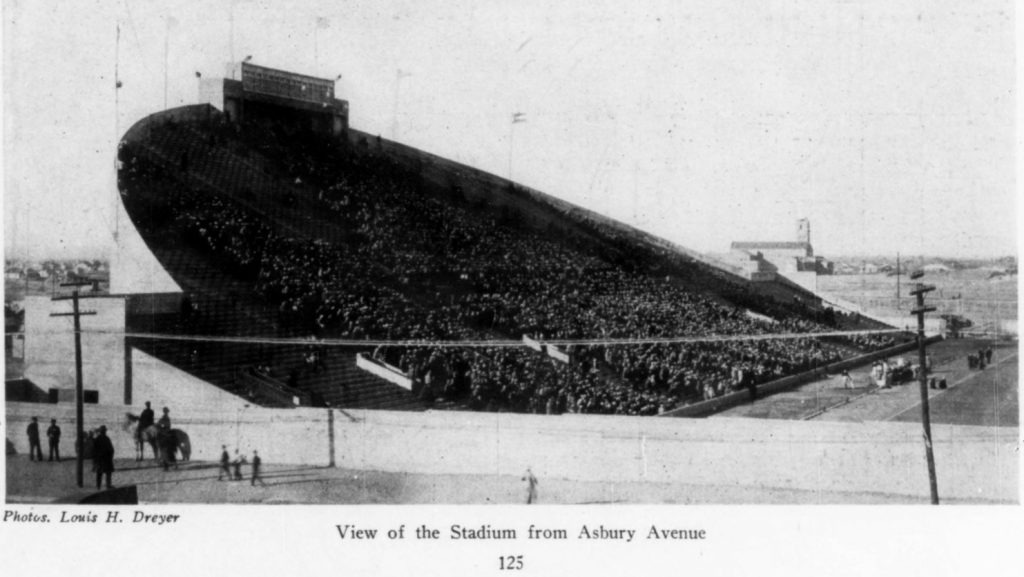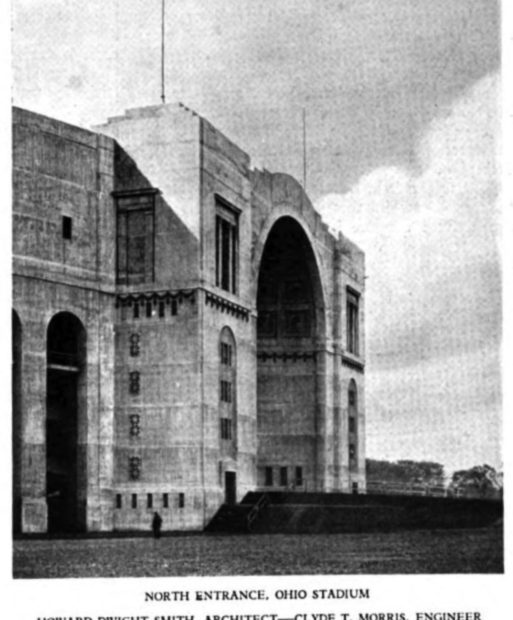Introduction
Journey back to the 19th- and early 20th-centuries as I uncover a captivating chapter of our nation’s recreational history – the birth of the American football stadium. Uniquely American, these architectural marvels emerged on college campuses at a time when sports and leisure began to carve out their place in our collective consciousness. These historic stadiums rose from the shared vision of architects, engineers, and college athletic departments whose innovative ideas created today’s architectural treasures. This multipart series identifies, documents, and recognizes America’s most historically and architecturally significant vintage football stadiums. Together, let’s ignite a renewed passion for vintage football stadium architecture, with a special focus on those structures that stood proudly before 1945.
Copyright © Jennifer Kenny, 2023
In the heart of every devoted sports fan lies a deep appreciation for the hallowed ground that is the sports stadium. Regardless of the sport it hosts, these monumental structures loom large on the town or cityscape, rising proudly above the bustling parking lots, grassy areas, and winding pathways. Irrespective of the team’s colors you wear, every sports team boasts a home field or stadium that beckons with its familiar sights, evocative sounds, and cherished traditions on game day. Furthermore, the sports stadium encapsulates the essence of a team, exuding an aura of romanticism, nostalgia and fervor that can bridge generations of passionate and loyal supporters.
Built the 19th– and early 20th-centuries, these vintage sports stadiums stand as a testament to a pivotal chapter in our nation’s recreational history. These architectural gems, uniquely American, took shape during an era when sports and leisure were emerging as central to our culture. In the embrace of these historic stadiums, we’re transported to a bygone era, a simpler time when amateur athletics reigned supreme. Then, the focus wasn’t on the colossal revenue juggernauts, corporate giants, or the extravagant fan experience we know today. These arenas predate the era of television, high-definition screens, opulent luxury suites, climate-controlled skyboxes, imposing ads, sponsorship naming rights, touchscreen concession orders, team branding extravaganzas, merchandise emporiums, and curated anthems. It’s a window to the past when a simple love of the game was at the core of these vintage stadium designs.
A Delicate Dance: Preserving and Modernizing Historic Stadium Designs

In the ever-evolving landscape of sports arenas, some teams choose to delicately modernize their historic stadiums, ensuring they cater to today’s entertainment-hungry fans while preserving the echoes of the past. Yet, others opt for a more drastic path—demolishing the old to make way for the new. In this ongoing debate, one vital mission stands tall: historians must delve into the annals of time, meticulously researching, documenting, and honoring America’s most architecturally and historically significant vintage stadiums.
For those teams fortunate enough to call these hallowed grounds their home, there’s an unwavering duty to preserve and renew these tangible links to their storied sporting past. Even savvy sports marketers understand that these stadiums are more than mere structures; they are living monuments, steeped in the glories of past championships, the legacies of extraordinary players and coaches, and the cherished traditions and rituals of devoted fans. These reminders are the very essence of today’s branding efforts, the wellspring of revenue generation, and the bedrock of the unbreakable bond between fans and their beloved teams.

Join me on this captivating multi-part journey as I shine a spotlight on these architectural treasures, ensuring they remain an enduring part of our sports narrative. Together, let’s ignite a renewed passion for the stadium’s architecture and its indelible role in shaping our rich recreational history, with a special focus on the college football stadiums that stood proudly before 1945.
– Jennifer Kenny, Architectural Historian, Local Architecture Chicago, 2023
More to come…next…Part II: The Birth of the American Football Stadium
